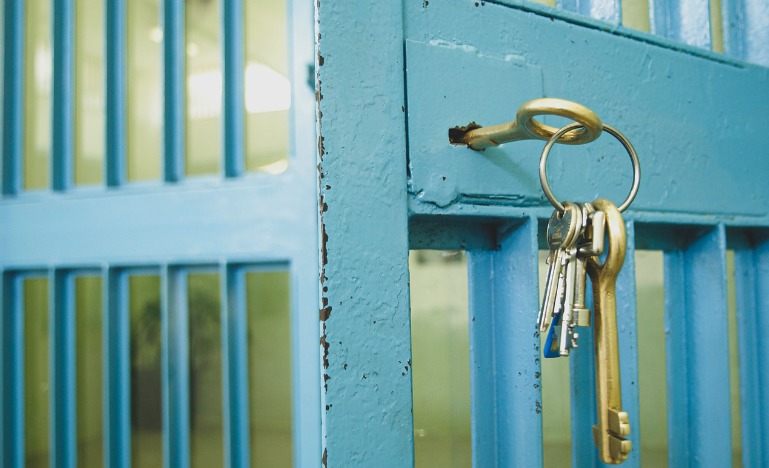The misinformation behind calls for bail reform
Justice Minister David Lametti says he will discuss bail reform at a coming meeting with provincial justice ministers. What's needed aren't changes to the law, but better resources for the court system.

The December killing of an Ontario Provincial Police officer has brought the issue of bail reform back into the spotlight after it was revealed that the suspected shooter had been out on bail. But criminal defense lawyers are challenging calls for reform, arguing that there is already adequate protection for the rights of the accused and the public's safety.
"From my experience on the ground, there is no catch-and-release approach to bail," says Rebecca McConchie, chair of the criminal law committee at the Trial Lawyers Association in BC. She disputes that judges grant bail to people accused of serious offenses without considering the public interest or its safety. "[It] is simply not the case."
That hasn't prevented the catchphrase "catch-and-release" from getting bandied about by critics of Canada's bail system. Meanwhile, premiers and police chiefs across the country have called on the federal government to tighten its bail laws.
But caution is in order, says McConchie. Judges consider their decisions carefully, based on facts. The trouble is that people will point to a single case to justify reforming the whole system, she says.
McConchie adds that much of the recent criticism betrays a lack of understanding of the law and how it fits with the Charter of Rights and Freedoms. Section 11(d), which guarantees the right to be presumed innocent until proven guilty, is the touchstone for judges and justices of the peace deciding bail matters.
Adding to the confusion, critics are urging Ottawa to create a reverse onus on bail, requiring people charged with possession of a loaded, prohibited or restricted firearm to show that pre-trial detention is not justified. But reverse onus provisions are already written into the law.
"There is already a presumption of detention for people charged with gun crimes, or offences that are said to be in relation to being in a gang or a criminal organization, or people who are alleged to commit offences while on a previous release order," McConchie says. Amendments to the Criminal Code in 2019 also created a reverse onus for bail in domestic violence cases. "That's something that the Trudeau government actually brought in," says McConchie. "There is already a requirement to consider the public confidence in the bail system."
No legislative bail reform could ever satisfy critics, she says, because there is no perfect bail system to be had.
Justice Minister David Lametti asserted in the House of Commons that Bill C-75, passed in June of 2019, codified several Supreme Court of Canada decisions.
In a speech to the Canadian Bar Association's annual general meeting last week, he lamented the misinformation around Bill C-75. "For all the talk about C-75 representing a major change in the law of bail, it really wasn't," Lametti said, adding that despite claims of a crisis in bail courts, data from Toronto show that between 2019 and 2021, there was a decrease both in the percentage of individuals granted bail and in the number of people re-arrested while on bail.
Even so, Lametti has committed to convening an emergency meeting with his provincial and territorial counterparts to discuss bail reform, including the possibility of establishing a reverse onus on additional offences.
"Those [Supreme Court] decisions arose from the fact that people who should be getting bail weren't getting bail," says Jessyca Greenwood, principal at Greenwood Defence Law in Toronto and a member of the executive of the Criminal Lawyers Association in Ontario. "If the bail system were working wonderfully, then those decisions wouldn't have been made. The government was merely trying to say that for administration of justice offenses that are more technical in nature, we should be looking at those more critically because they are clogging up the system."
Greenwood notes there has been a societal shift and a recognition that racialized and Indigenous people have been over-incarcerated and, in some cases, over-policed with breach offences, such as missing curfews. In the case of the OPP officer murder, the Globe and Mail later reported that the accused had been granted bail because of his status as an Indigenous person, even though the judge in the case considered his release "iffy," given his past history of violence.
But the amendments introduced in C-75 were intended for less serious offences, Greenwood says. "One of the issues that comes up is a lot of people in pre-trial custody end up serving more time than they would have if they'd plead guilty, and I don't think the public realizes that."
"If we don't do something to get people out and deal with the delays, then the serious matters like gun cases are being stayed because we don't have enough judicial resources to get those cases moving through to trial."
Hence the need to focus on getting more resources to the court system, including hiring more justices of the peace in more courts. Increasing the number of drug treatment courts working in partnership with hospitals ensure that people with mental health issues get treatment rather than being charged, all of which would lead to lower recidivism rates.
"The system is not broken," Greenwood says. "It may need some reforms in places where it pertains to some serious offences, but it's not broken."
Kevin Westell, principal at Pender Litigation in Vancouver and chair of the CBA's criminal justice section, says that the CBA is waiting to see what reforms are proposed before it takes a position. Still, he advises caution on bail reform.
"The Supreme Court of Canada in recent years has been proactive in really addressing bail issues and seeking to provide clarification on the bail system as it stands, and it hasn't been that long since the constitutionality of certain provisions that relate to bail have been challenged, such as the tertiary ground," Westell says, referring to the criterion that requires the detention be ordered if necessary to maintain the public's confidence in the administration of justice.
There's little to support the provinces' claim that the law is preventing them from being more effective in administering bail, Westell adds, taking the view the government should "proceed based on evidence, and we don't have that information at this point."
Compounding the optics of the current debate is that bail hearings are often subject to publication bans to prevent tainting a jury pool in a future trial.
According to Greenwood, the public should be allowed to know why a person is granted bail, citing the tertiary grounds of the bail test around perceptions of the administration of justice.
"There are certain cases where a publication ban may not be appropriate, but that's a balancing," Greenwood says. "From a defence lawyer's perspective, you don't want to prejudice a jury pool against your client. It's up to a court to say in a case like that whether there's some way to demonstrate to the public why the decision is reasonable while still respecting the accused's right to have a fair trial, and making sure that we don't say something that might prejudice the jury."
Greenwood says that part of the problem is that the public is being told that there's a problem without being told all the facts.
McConchie says that further restrictions haven't worked to stop people from re-offending or to deter offenders and that it's time to try something different. Greenwood notes that cuts to programming focused on at-risk youth or other vulnerable groups have been noticed on the ground.
"You have to look at the root causes of crime and start finding ways to look at how to prevent that," Greenwood says. "It needs to be a more proactive strategy. It's not a single-faceted problem."


